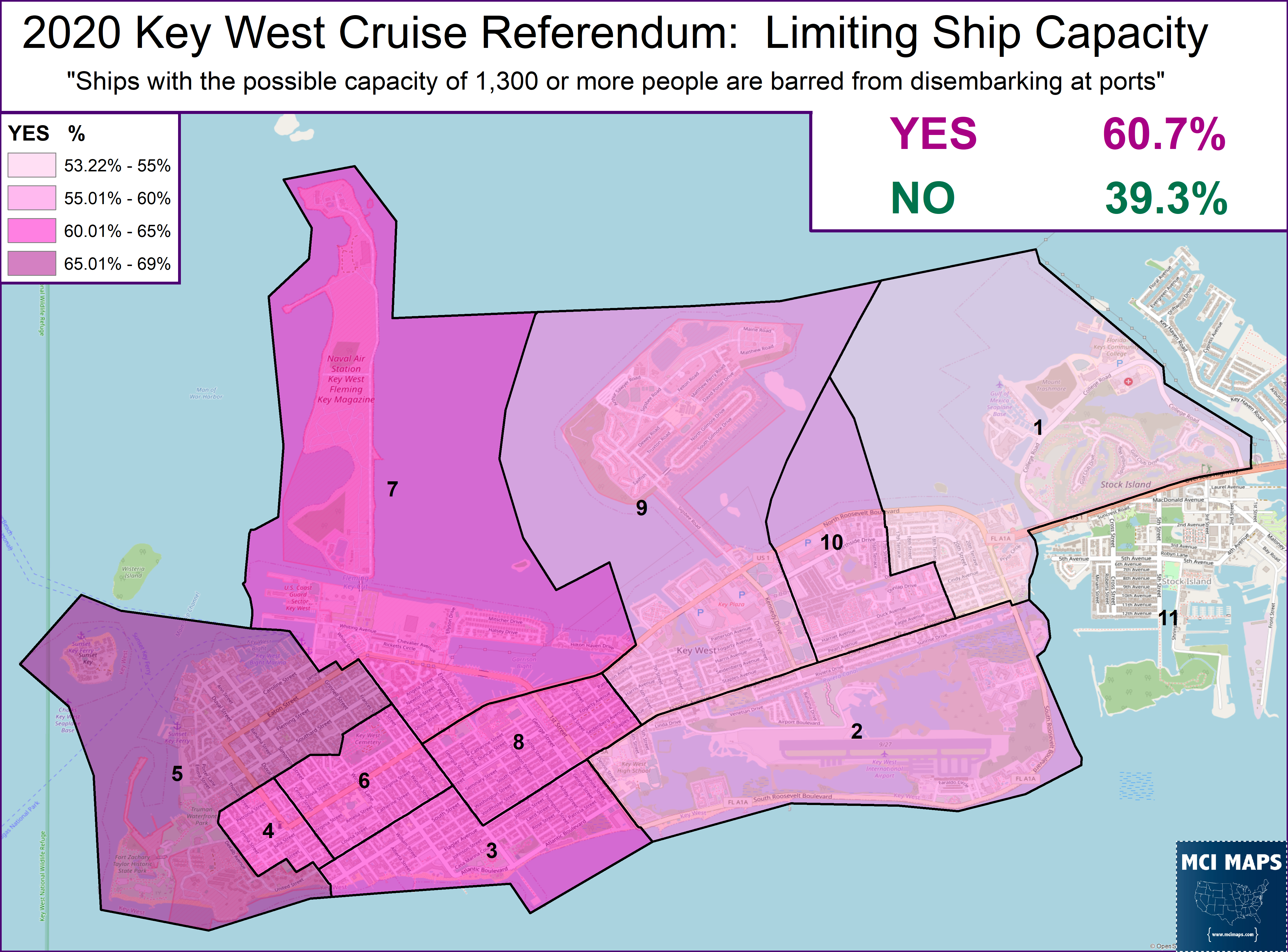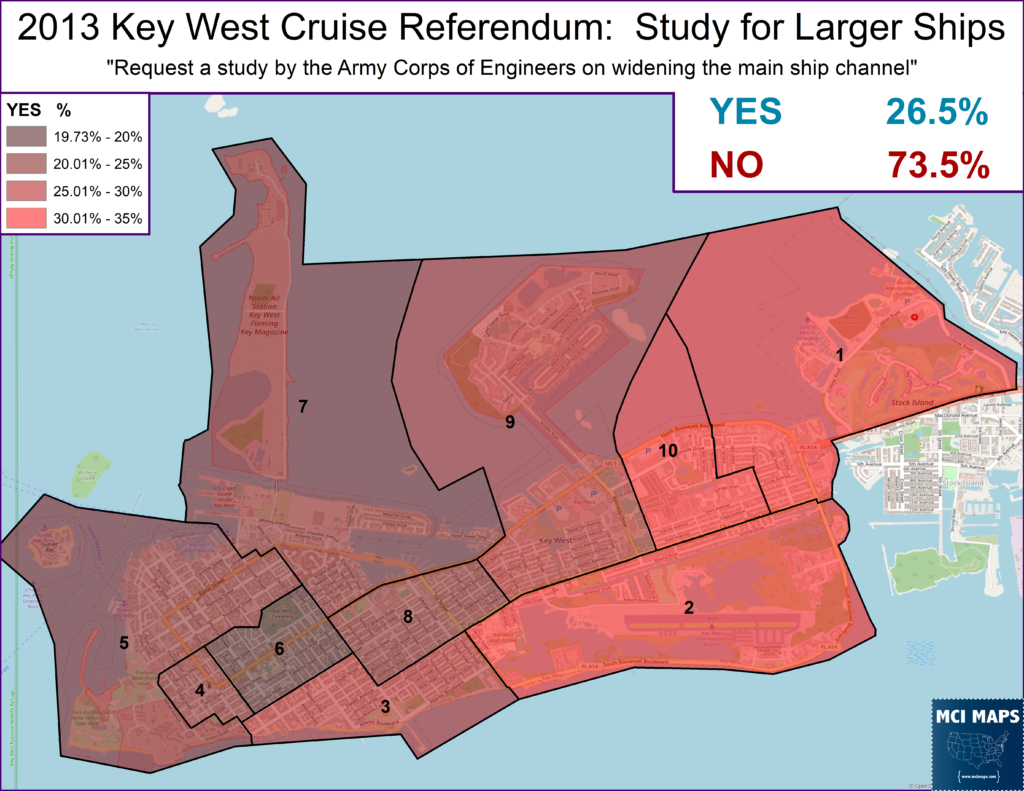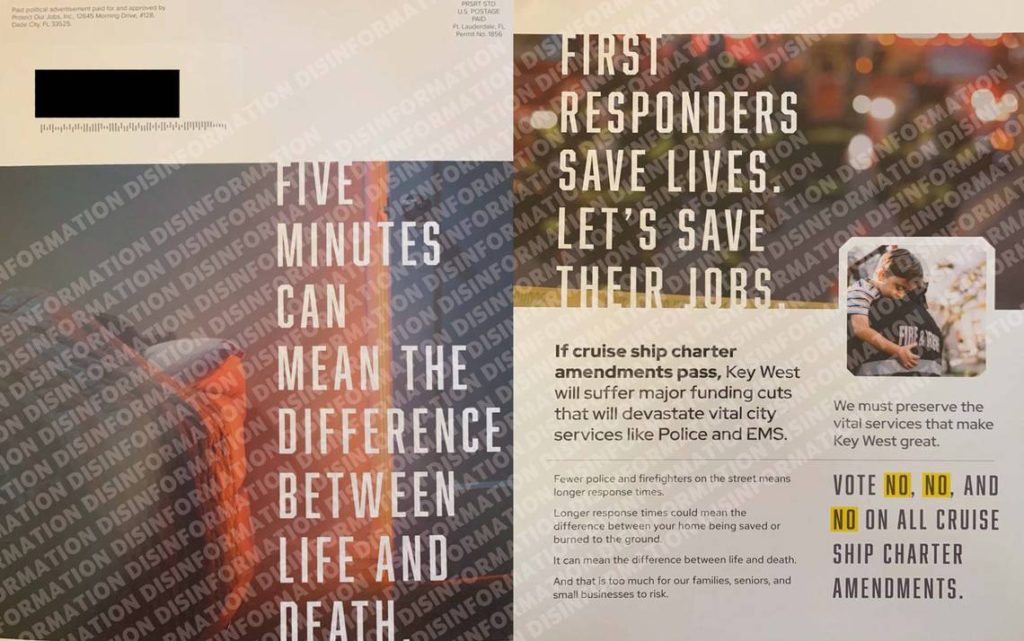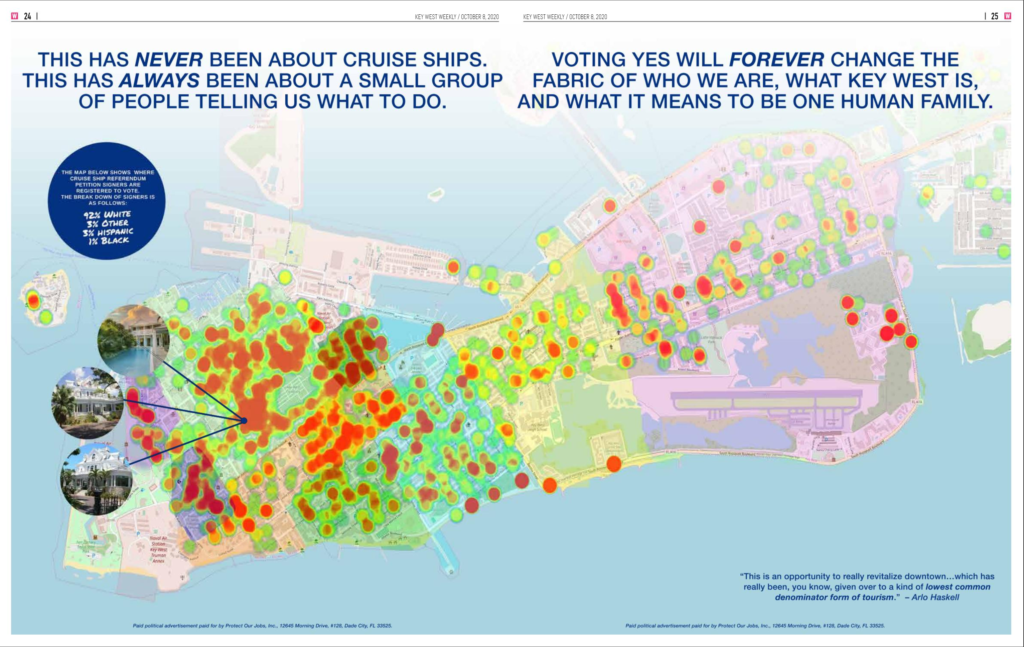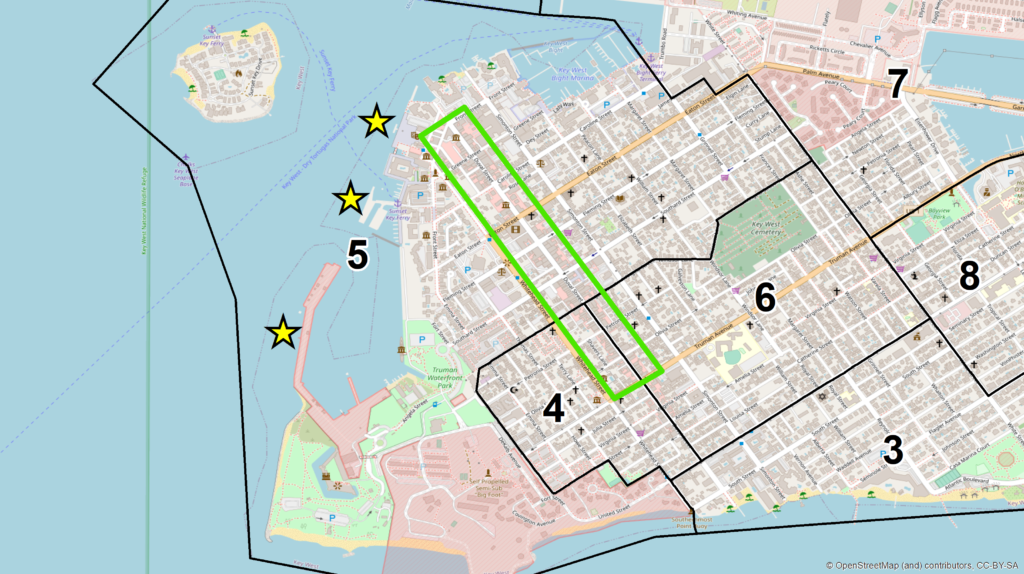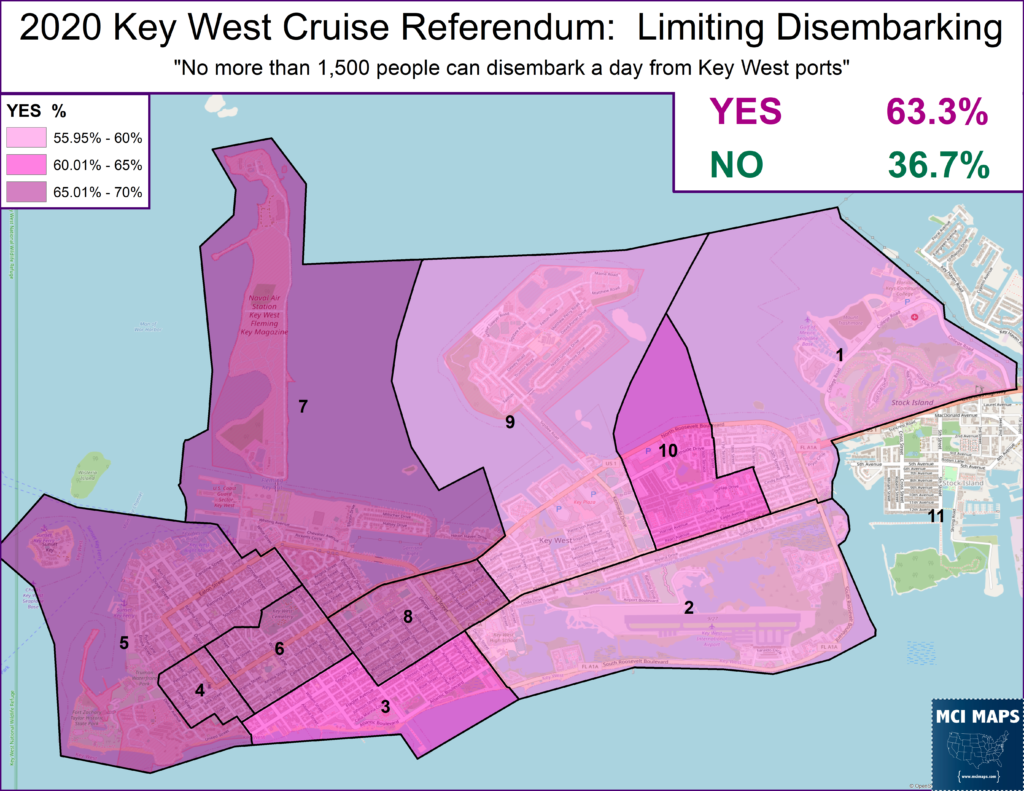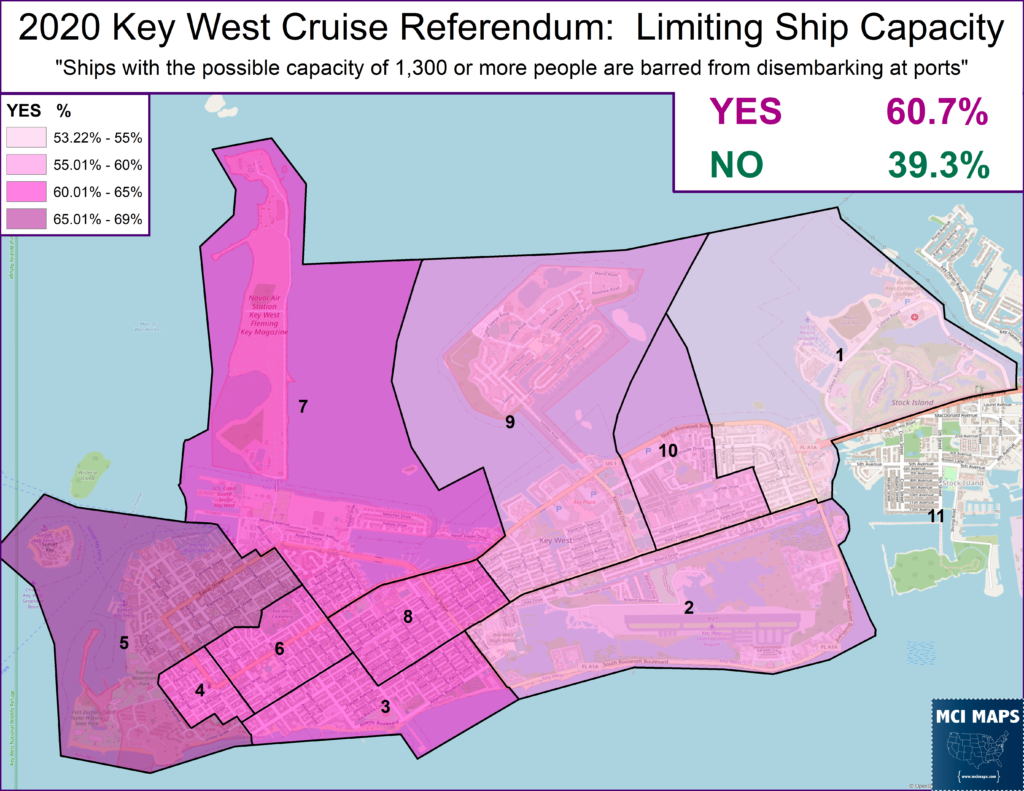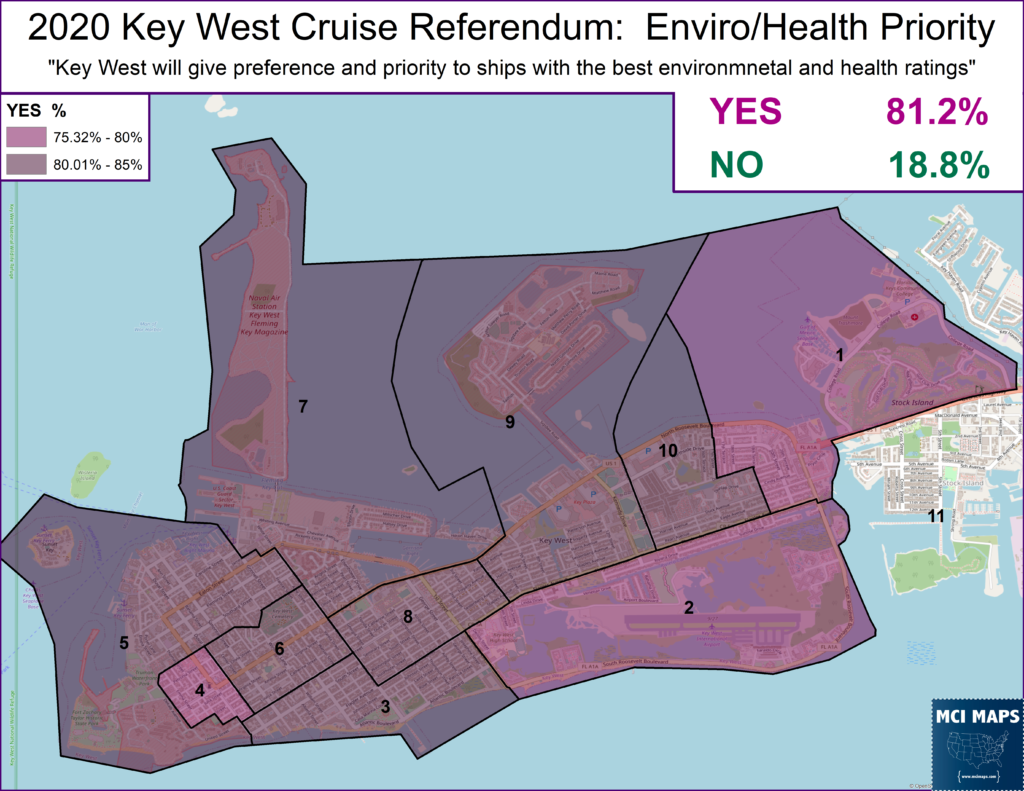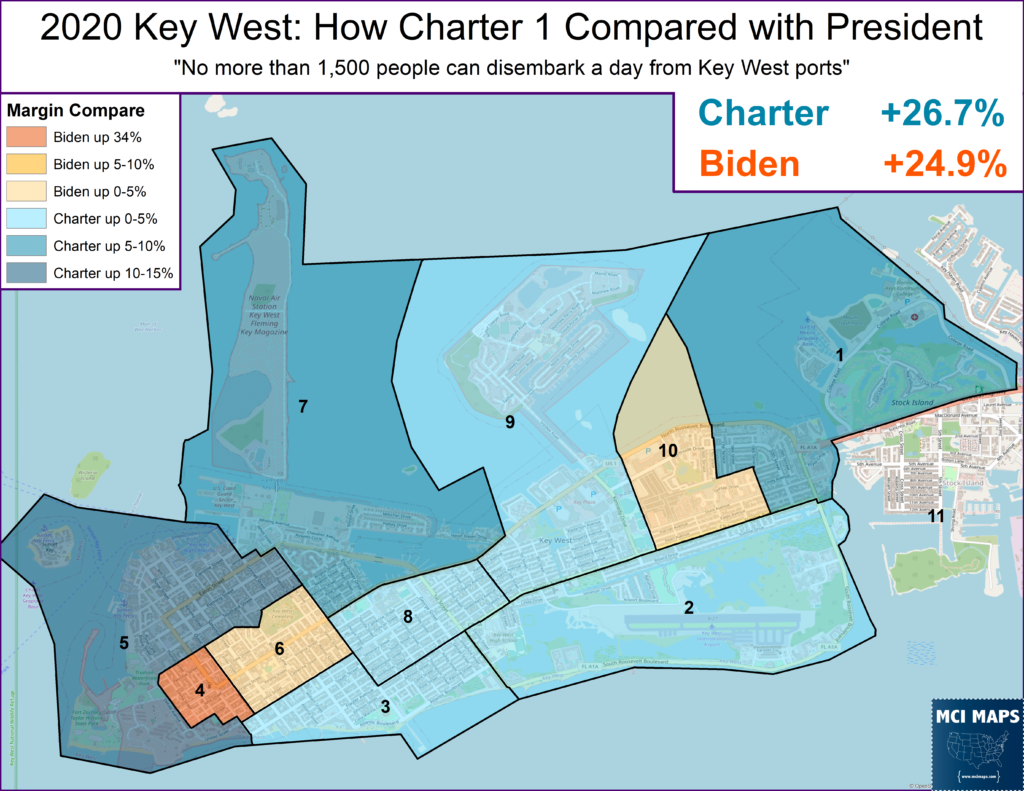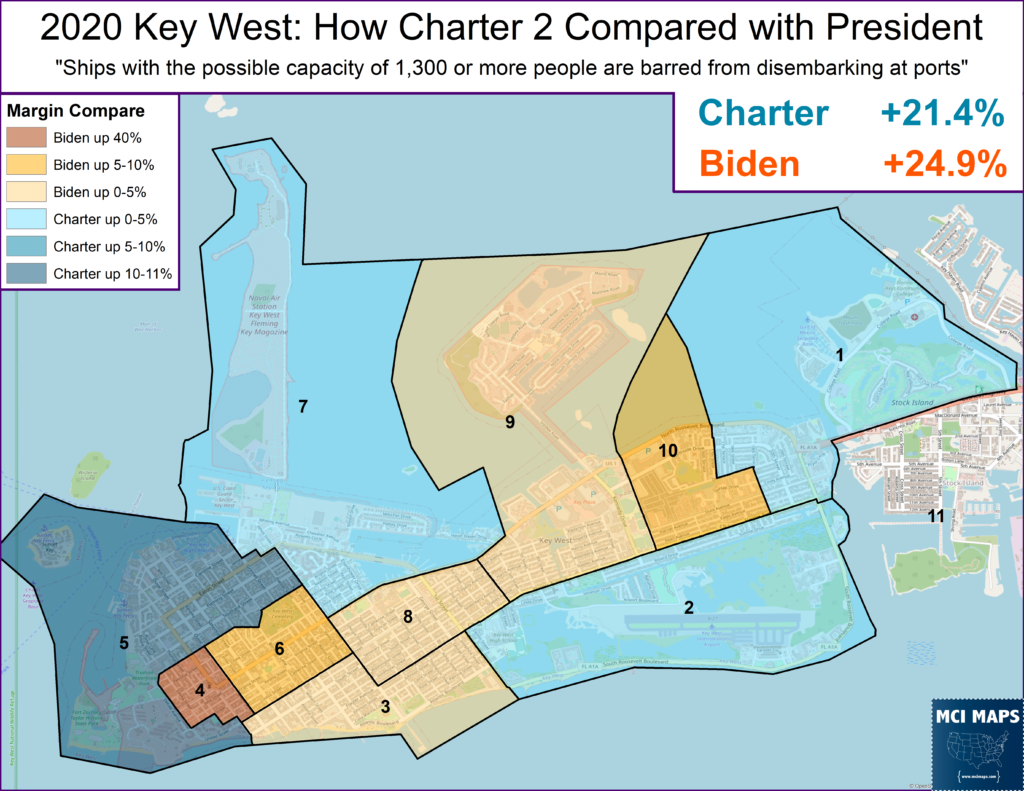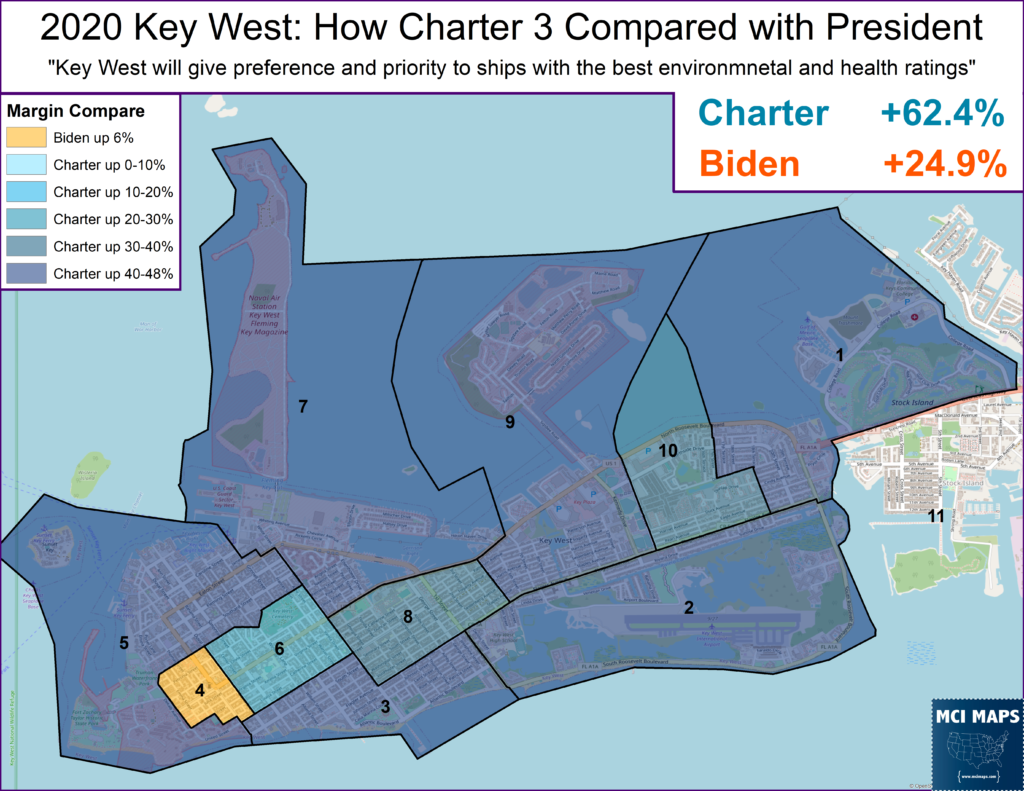In November of 2020, voters in the city of Key West voted to restrict what type of cruise ship activity would happen in their ports. Residents gave over 60% support to measures aiming to limit cruise ships after years of clashes with the industry. Last week, the Florida legislature, in support of Governor Ron DeSantis and the almost $1 million in donations he received from the owner of the Key West port, voted to overturn the people’s vote.
Key West vs The Cruise Industry
For many years, the city of Key West has had an uneasy relationship with the cruise ship industry. The community sits on the southern fringe of Florida, a multi-hour car ride from southern Miami-Dade county. Tourism is a major economic driver of the area, but it is also a self-sustaining town. Balancing the need for tourism with maintaining the area’s charm and environment has been a longtime debate in the city. How much the city benefits from the industry has been hard to quantify. A breakdown by the Miami Herald showed that the city only nets under $100,000 a year from the industry after its expenses are deducted from the fees it gets from the ships. The pro-cruise side largely focuses on the fact that folks disembarking from the ships spend money in the town.
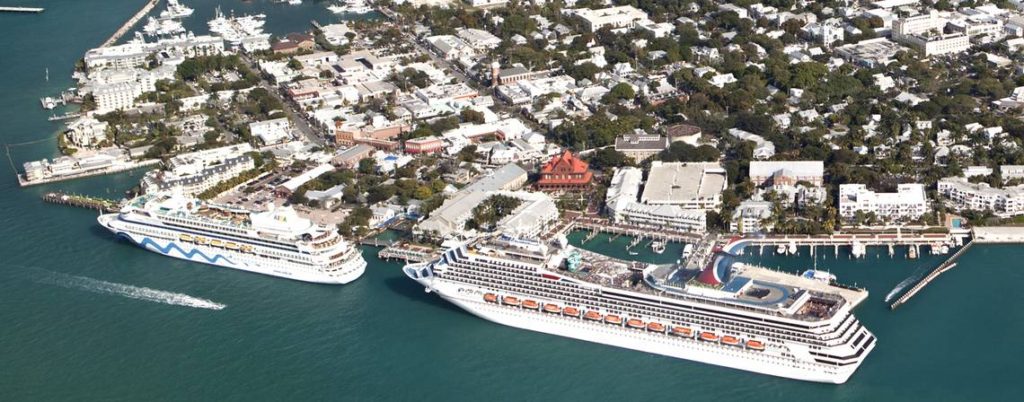
How beneficial the industry has been to the city really depends on the metric being looked at. A study by the pro-cruise industry side pointed out 1/3 of tourists come from the cruises; however, that same study showed only 7% of tourism spending is from cruise passengers. Meanwhile, anti-cruise studies say that since cruise passengers don’t stay overnight, their expenses are limited to quick shopping and food; while overnight tourists spend much more in the city.
The debate over cruise ship importance reared its head in 2013, when the industry and its supporters wanted to request a study on expanding the ports to allow for even larger ships. The study question itself became a referendum on the industry. The pro-study (hence pro-cruise ship) side lost by a 2-1 margin. The referendum, held the same day as the mayoral election, saw the most votes cast despite being last on the ballot.
With the COVID-19 pandemic, the cruise industry eventually ground to a halt thanks to orders from the CDC. After a stream of bad press for the industry related to how it responded to the pandemic, the anti-cruise advocates began to talk about the city re-evaluating its relationship with the industry. It was at this point that the November referendums began to take shape. Through the summer and fall, the anti-cruise advocates boasted about how the city was not decimated by the lack of cruise tourists – aiming to deflate a major argument the industry put forward.
The 2020 Campaign
Key West Committee for Safer, Cleaner Ships
The backers of the referendum on the cruise ship industry formed a committee, Key West Committee for Safer, Cleaner Ships. The committee began collecting signatures in May to put the measure on the ballot. In July, the news came down that the petitions had been gathered and the vote would be held in the November election. Three measures were put on the ballot; with the following summary text.
- “The number of persons disembarking from cruise ships shall be limited to a total of not more than 1,500 persons per day at any and all public and privately owned or leased property located within the municipal boundary of the City of Key West.”
- “Cruise ships with the capacity to carry 1,300 or more persons (passengers and crew) shall be prohibited from disembarking individuals at any and all public or privately owned or leased property located within the municipal boundary of the City of Key West.”
- “The City of Key West shall give preference and priority to cruise ships and cruise lines that have the best environmental record (the lowest number of environmental violations, penalties and fines) and best health record (the best scores and least number of violations in health inspections and reports issued by the Center for Disease Control Vessel Sanitation Program).”
The committee’s arguments are detailed on their website. The main points, however, are as follows. They argue the industry contributes only a small amount to the overall Key West economy, and that the environmental damage the larger ships cause risk damaging the coast and reef that makes the area so marketable for tourists. The environmental study cited shows that the increasingly larger ships damage the sea ecosystem and the reef with how much sediment they propel up. Even recent news has shown that cruise ship efforts to reduce air pollution just wound up causing more water pollution. The committee argues that the more modest-sized ships, which already do business in the Caribbean, are ready to make deals with the city and will cause less environmental damage.
In addition, the advocates argued that huge cruises resulted in rising numbers of stores that aimed to make quick cash off the passengers and didn’t respect or reflect the old town nature of the city. Discussions about the “character” of shops around places like Duval ST and Eaton ST show up often in the debate; with maps reflecting these being major commercial centers.
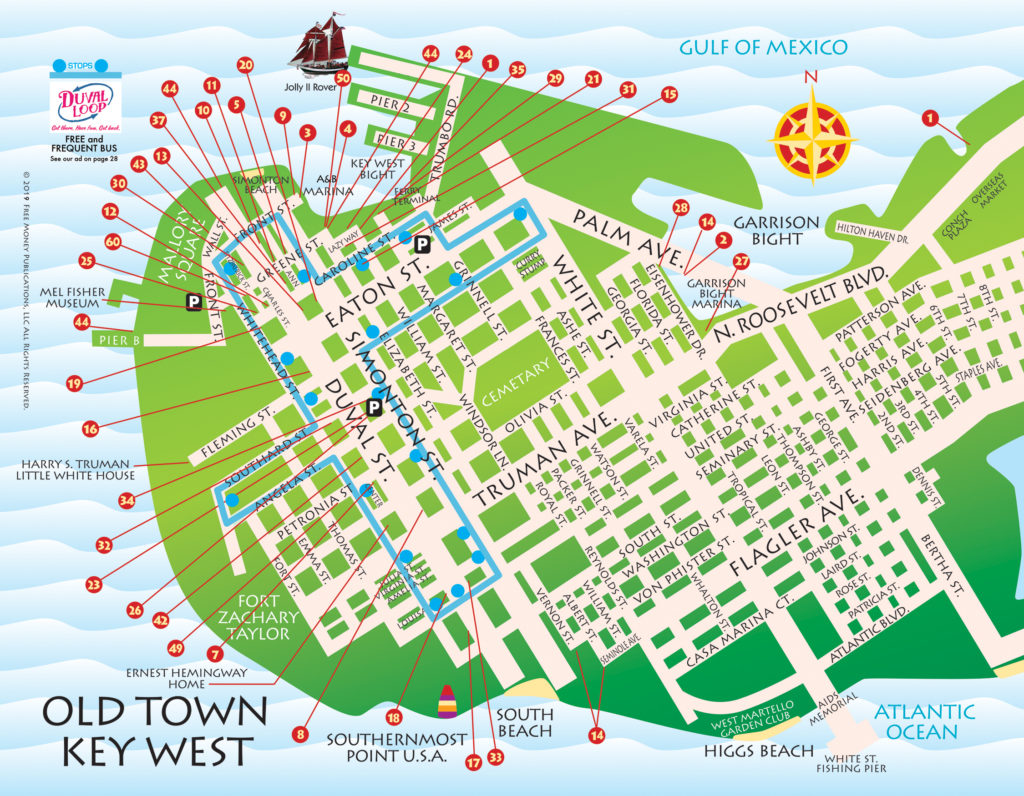
The committee was also able to use the lack of ships for months to show that the economy of the city was still holding strong, and that a loss of big ships wouldn’t be the economic disaster the industry claimed. The COVID pandemic itself was brought up by the committee; citing how poorly the industry adapted to the situation before the CDC halted ships. The committee warned a mass infection – spread to the city itself from the ships – would cause much worse economic damage than the regulations being put forward.
The Cruise Ship Industry Response
Among those who were on the anti-referendum side; there were two camps. Some local business owners were more interested in a compromise to ensure the concerns brought up were addressed but not banning certain ships. While the city itself appears to as a whole to not need the industry, there were/are certain businesses that rely on it more than others. The Key West Chamber of commerce argued the referendums would cost the city over $90 million in jobs and income; but this is in direct conflict with the 2021 data that showed the city held up well without the industry (at least as well as any area in the pandemic). The aggregate effects of the referendum really are varied depending on the side you talked to.
There are testimonials from local business owners who cited over 50% of their income coming from cruise passengers. Both sides actually had business owners and locals on their side; with the Key West Travel Guide being a notable pro-referendum organization. Clearly some businesses relied on the industry, while others felt the industry’s pollution or crowds hurt them.
The pro-cruise side’s tactics in the campaign itself, however, didn’t focus as much on testimonials from local businesses; but rather some pretty outlandish scare tactics. A detailed investigation by the Miami Herald revealed that the cruise industry funded dark-money mailers that claimed the loss of income from the ships would lead to cuts in police departments and risk safety. The dark-money groups flooded the city with these types of mailers, aiming to scare voters into rejecting the proposals.
The mailers actually caused a divide in the pro-cruise community, which saw local political operatives quit the effort and blast the mailers as bad politics that did nothing to help defeat the measures. According to the article, local polls showed voters did not hold positive views of the cruise industry – so these mailers were a clear Hail Mary play.
Campaign War
A campaign war in the papers and mail dominated coverage in Key West as much as the Presidential campaign did. As already discussed, dark money flooded the city with ads labeled as misinformation from the Miami Herald. The issue of city service cuts was a major theme of the campaign against the measure. The Herald covered multiple mailers sent by a committee called Protect our Jobs. The coverage of each mailer can be found here, here, here, and here. All four mailers were labeled as misinformation, while the main mailer sent by the YES side was found to be on the level. Judge for yourself with the links.
The local paper, the Key West Weekly, was FLUSHED with advertisements for weeks before the election. Going through the archives yielded dozens of results. The pro-ship side dominated in the advertisements.
- This two-page pro-referendum advertisement appeared in mostly weekly papers (image)
- The cruise industry rans ads working to convince voters they took COVID/health seriously (image)
- Pro-referendum advertising highlighting the damage the ships do to the environment (image)
- Cruise industry advertisement on back cover of paper saying referendums would harm jobs (image)
- Owners of a business arguing against the referendum, but notably they take a pretty iffy stance on the industry themselves, arguing a phase-down may be needed, but that it can’t happen suddenly. This highlighted that even some anti-referendum locals didn’t “love” the industry (image)
- Pro-referendum advertisement showing past public safety officials who support the measures, clearly aimed to persuade voters the measures wouldn’t hurt safety (image)
Two other pieces of news coverage in the paper stood out
- A question-and-answer with both sides about the referendums. The pro-referendum’s argument that the goal was to go back to the state of play in the 1990s (when smaller ships were more common) stood out as the best summary of the debate. Referendum backers seemed, more than anything, to take offense to the new classes of mega-ships and the environmental impact they have; along with the flush of people who flood the city. (image)
- A detailed look at the city finances, with interviews with officials, where the government does say that the loss from fees they collect from the cruise lines would be minimal. To me the only thing in real debate is the overall effect of tourism money itself. (image)
A few ads also highlighted the narrative that existed around the referendum from the pro-cruise side; that the backers of the measure were liberal, wealthy, white activists. The pro-cruise side worked to undercut the referendum by claiming the anti-cruise activists were out of touch with the city and wouldn’t be affected by job losses. One paper advertisement stood out.
- Pro-labor union advertisement arguing the referendums would harm jobs and disproportionally effect minorities. Hence the measures were discriminatory (image)
In addition, a huge two-page spread in the local paper showed a heat map of the voters who signed the petition for the referendums. It showed them heavily concentrated in the west and being overwhelmingly white.
Now, as a mapper myself, this is a good example of How to Lie with Maps. Like with statistics, you can use true facts and still twist them to the point its dishonest. The heat map itself shows incredible density in the west. However, this glosses past the fact that the west is fairly dense and populated (hence it actually has more precincts than the east). Also, it shouldn’t be a shock that the referendum backers focused on areas most effected by the piers to generate their support. The racial statistics are whiter than the city as a whole; but the city is still 70% white and was actually 78% white in its voting that November. The selection of some high-scale homes of course is incredibly selective and ignores that many dots on that map are in much more modest communities. The map is a very clever piece though, and reflected an important strategy the pro-cruise side was using.
The Referendum Results
When the election results came in, it was a solid victory for the Committee for Safer, Cleaner ships. All three measures got at least 60% of the vote; winning in every precinct in the city.
The precinct breakdowns are important to look at as well. As mentioned, issues around the effect of the industry in the old town area (right by the piers) was a major source of frustration. If we look at where Duval Street and the three cruise ports are – we see that Precinct 5 is directly overlapped with this region. Keep that in mind.
Each referendum told a similar story, all precincts backed the measure, but the precincts closest to the cruise piers and downtown were the strongest backers.
The two measures dealing with size and disembarking all got over 60% of the vote, while the environmental preference measure scored a resounding 81% of the vote. The precinct results are below.
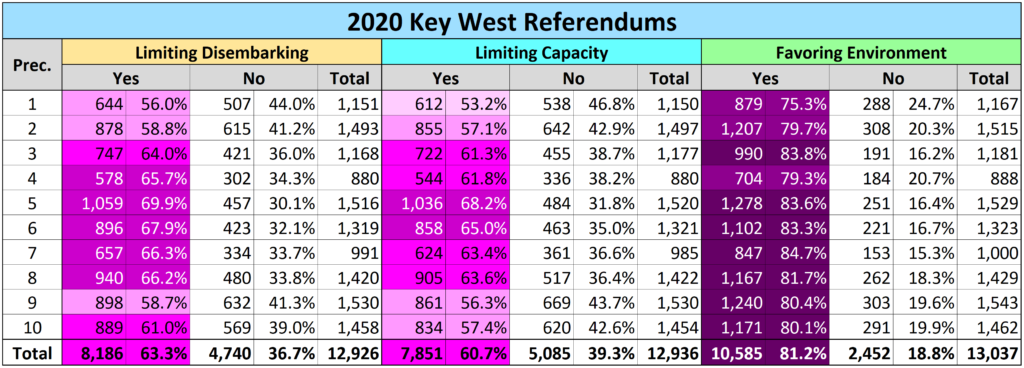
As the table shows, the measure was strongest Precinct 5; which directly overlaps with the piers. The measures were on average weakest further away from the piers, on the eastern end of the city.
How the Measures Compared to Partisanship and Race
As critics of the measure aim to dismiss the referendum as something pushed by white liberals, it’s worth investigating how the measures compared with other elections in the city. Key West is a fairly Democratic city. It gave Biden 62% of the vote and remains solidly blue even as the rest of the Florida Keys have trended more Republican.
The Florida Keys, which are 100% of Monroe County’s vote, have gone from being a swing region to more modestly but steadily GOP in recent elections. A big part of this has been the cost of living on the keys driving folks into south Miami-Dade and leaving upper-income and more Republican-aligned voters along the upper keys. Only Key West retains a constant Democratic edge.

The measures, however, did not perfectly align with the Presidential vote. Across the city, many precincts saw the measure over or underperform the Presidential toplines. One constant pattern stood out; Precinct 5 saw the largest overperformance, while Precinct 4 saw the biggest underperformance. The maps below show how the Biden margin compared with the YES margin in each referendum.
The first question going through the mind is what happened in Precinct 4. Well the simple answer is demographics. Precinct 4 was solidly in supportive of all four measures, but was over 80% for Joe Biden. The sky-high Biden number is no doubt aided by the precinct being 35% black, the only precinct with such a large share of the non-white population.
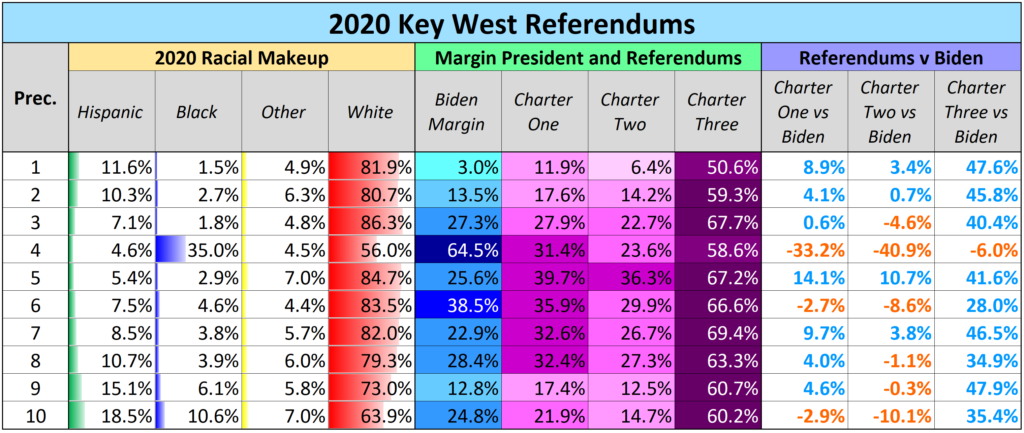
It’s not clear if the referendum had a significant racial gap, but it is clear the Black voters were not 90% in support like they were 90% for Biden. If white and black voters had the exact same levels of support for the referendum, then the underperformance is explained right there. It is also entirely possible the pro-cruise advertisements about “rich, white driven” could have had a real effect. Unfortunately, I don’t have any data to do a better racial breakdown with. It can be said for sure that the black community was not as universal for the referendums as they were for Democrats as a whole. What is clear though is that many whiter precincts were less supportive of the referendums.
The “rich folks pushed this” narrative
Opponents of the referendum have pushed a narrative that white liberals funded and pushed these measures, putting blue-collar businesses at risk. With passage that narrative turned to “rich white liberals drove the measures to victory.” This narrative is no doubt fueled by the fact that Precinct 5 is the richest precinct in the city. With an estimated mean income of $118,000 and being heavily white, it’s easy to call it a day and say “see white liberals pushed this.” This, however, ignores that fact that the measures generated support just a few points lower in precincts with almost half the mean income. Precinct 8, for example, was just a few points lower on question 1 but is at a mean income level of $65,000.
Every census tract in the city has a mean income that ranges from $60,000 to $120,000 and the deviations in the referendum results don’t line up well with income data. Precinct 5, overall, only stands out significantly when looking at Charter 2; the limit on cruise ship size. This could be partially explained by an economic security that made concern about loss of certain ships less pause-worthy. However, it can also be partially explained by, again, their proximity to the piers and the frustration many locals gave about the size of the ships and the noise and pollution they caused. It can’t be denied the richest precinct was the most pro-referendums, but it also can be partially explained by their proximity to the piers.
With the conclusion of the referendums, it was clear a lawsuit would begin. Legal challenges had already been heard but were put aside until the measure passed. Notably the owner of the private port, Pier B, was a major suit driver. It also became clear that the Florida legislature would likely take up the issue in its annual legislative session.
DeSantis and the Legislature Get Involved
As the legislature began its 2021 session, it became clear an effort to preempt the city was in the works. The GOP-controlled legislature has a long history of overriding local governments on issues like the minimum wage or paid leave mandates. This year, control of ports became the next biggest issues. The debate raged in the legislature for a few weeks, with pro-referendum folks arguing the measure should be heard in court – not have local authority stripped away. Environmental groups appealed to Ron DeSantis to pledge to veto any such preemption legislation. The referendum committee also ran digital ads during session, using the hashtag #DontWreckTheReef.
Legislation was filed not only to nullify the referendums, but to preempt any city from enforcing any such proposals in the future – effectively giving cities and counties no control over their ports. After local governments across Florida began fighting the legislation, the backers narrowed the bill to largely just dealing with the Key West referendums. In late April, the Florida Senate passed a bill to preempt the city on the referendum; but notably saw newly-elected GOP Senator Ana Maria Rodriguez vote no.
Proponents of the bill really clung to the idea the referendums were discriminatory. They argued white, rich folks had passed the measures to keep “the masses and rabble” out of their city. We’ve already touched on the precinct data not backing up a classist or elitist argument. Local officials, many of whom were iffy on the referendums, rejected these characterizations. This exchange, documented in the Miami Herald, cover the arguments of the house sponsor, Spencer Roach.
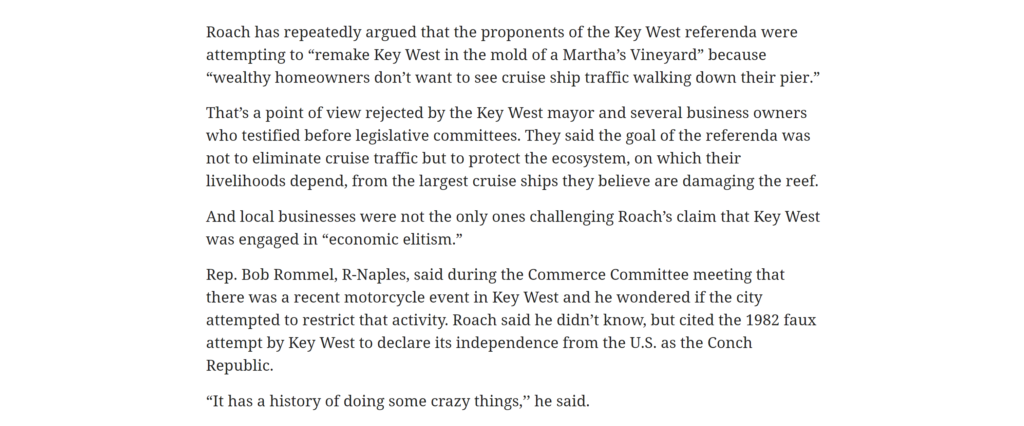
Roach’s citing of the publicity stunt of Key West “seceding” from the country really highlights how little he knew about the issue he was pushing.
The measure still had to be voted on in the Florida House, and with a tight legislative timeline (session is 60 days) there was always the chance the bill could die due to never getting a vote. Then, in the last week of session, a quick back and forth took place.
- April 26th – a Miami Herald report showed that Mark Walsh, who owns Pier B, the private port that most cruise traffic runs through, donated $1,000,000 to Ron DeSantis’ political committee. Walsh had initially been suing the city over the referendums, but moved to lobbying lawmakers on the matter. This report generated tremendous controversy.
- April 27th – House sponsor Spencer Roach declares the bill dead, saying it doesn’t have support and is too narrowed to directly attack the city of Key West. Plans to revisit the issue the next year.
- April 28th – Florida Senator Jim Boyd brought up an amendment to a broader transportation bill that said limitation in any of Florida’s Deepwater ports was not allowed – invalidating the Key West referendums. Boyd’s district includes properties owned by Mark Walsh. The amendment was passed in both chambers on largely party line votes that night.
In the end, the legislature rammed through the preemption, all the while the Republican State Senator, and State House member, vocally opposed the bills. Both of these Republicans, btw, lost in the city of Key West in their 2020 elections. Despite this, they stood up for the city in the legislature.
So what happened? Did DeSantis give Senator Boyd a call? Did Walsh? Did the House insist on it, as some Senators have said? I don’t have a good answer (the GOP doesn’t talk to me). But if you don’t think this bill was bought and paid for with donations, you need your head examined. Regardless of your opinion on the referendums or the cruise industry, one thing is clear, democracy was overridden in Key West with a donor’s checkbook.

